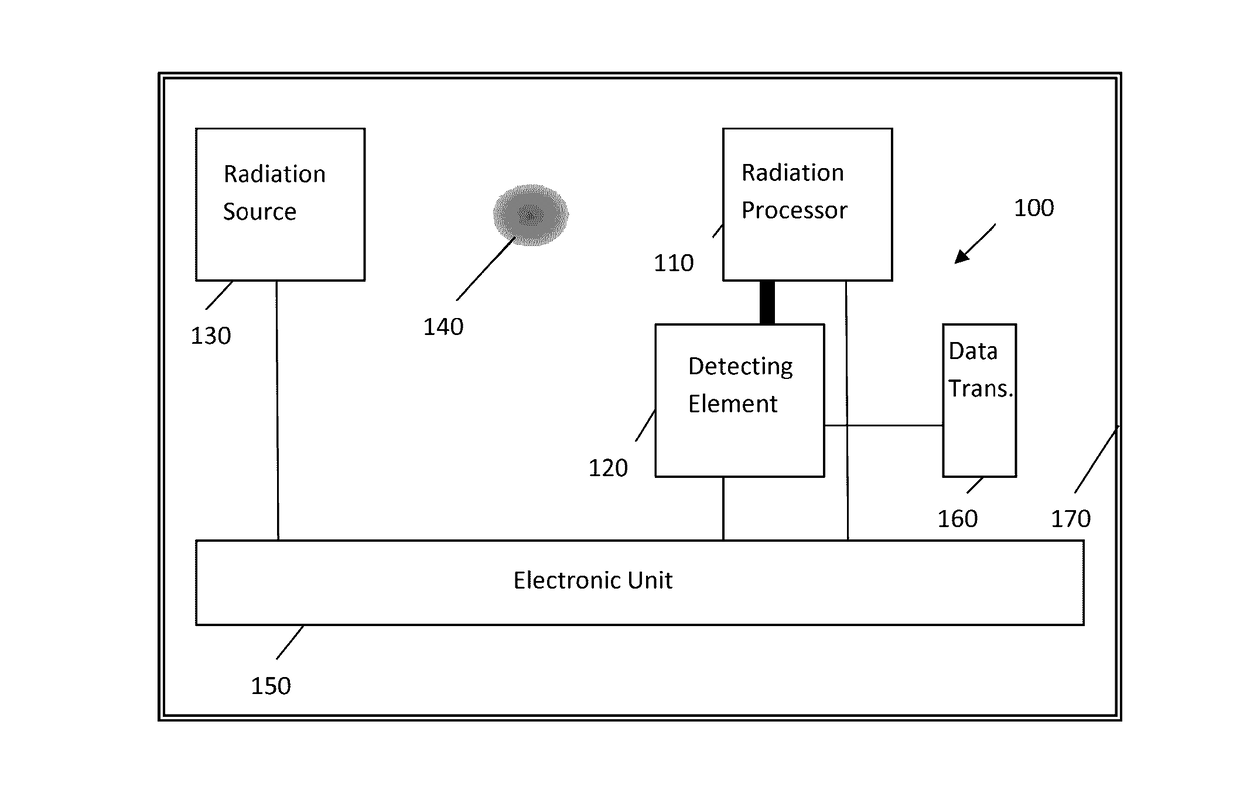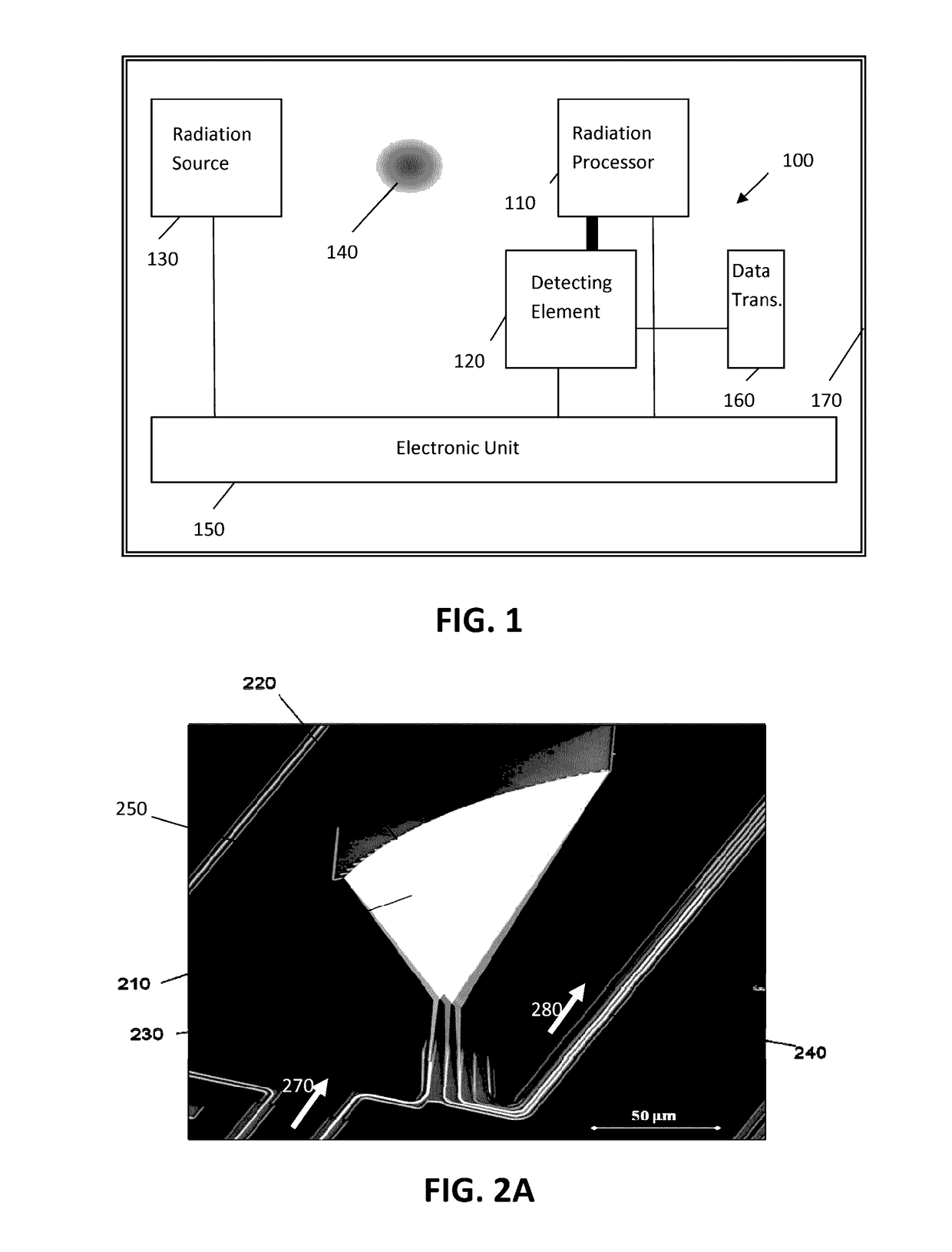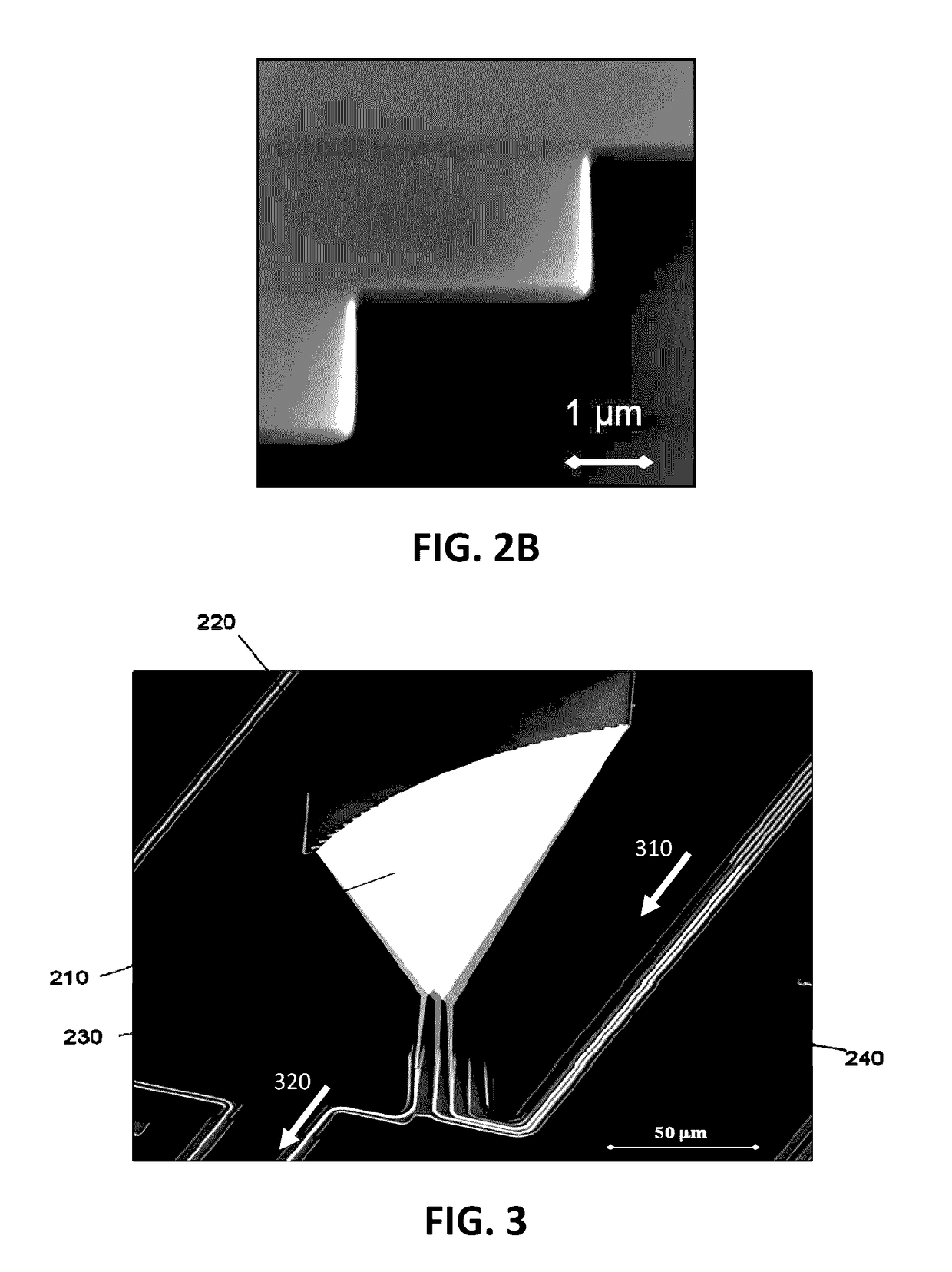Implantable sensor
a sensor and sensor technology, applied in the field of implantable sensors, can solve the problems of limited absorption and diffraction of packaging
- Summary
- Abstract
- Description
- Claims
- Application Information
AI Technical Summary
Benefits of technology
Problems solved by technology
Method used
Image
Examples
Embodiment Construction
[0070]Where in embodiments of the present application reference is made to a photonics integrated circuit (PIC), this refers to a variety of forms and material systems such as for example low-index contrast waveguide platforms (e.g. polymer waveguides, glass / silica waveguides, AlxGa1-xAs waveguides, InxGa1-xAsyP1-y waveguides), high-index contrast waveguides (e.g. Silicon-on-Insulator, semiconductor membranes), plasmonic waveguides (e.g. metal nano-particle arrays, metal layers), also called Photonic Lightwave circuits (PLC). A photonic integrated circuit comprises at least one integrated optical component, such as for example but not limiting to an integrated optical cavity, an integrated optical resonator, an integrated optical interferometer, an integrated optical coupler, a waveguide, a taper, a tunable filter, a phase-shifter, a grating, a modulator, a detector, a source, a multiplexer, a demultiplexer or a combination thereof. The optical components can be active or passive. T...
PUM
 Login to View More
Login to View More Abstract
Description
Claims
Application Information
 Login to View More
Login to View More - R&D
- Intellectual Property
- Life Sciences
- Materials
- Tech Scout
- Unparalleled Data Quality
- Higher Quality Content
- 60% Fewer Hallucinations
Browse by: Latest US Patents, China's latest patents, Technical Efficacy Thesaurus, Application Domain, Technology Topic, Popular Technical Reports.
© 2025 PatSnap. All rights reserved.Legal|Privacy policy|Modern Slavery Act Transparency Statement|Sitemap|About US| Contact US: help@patsnap.com



